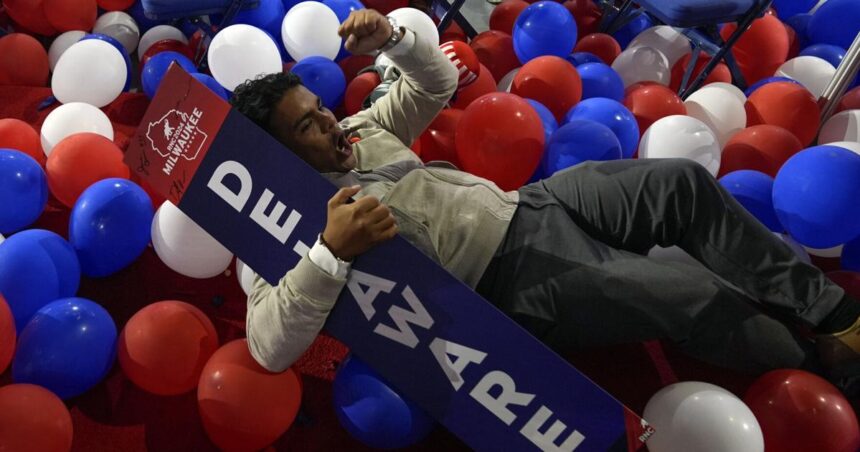Democrats may have just sounded the death knell for national political conventions.
J. Mark Powell
When Vice President Kamala Harris received her party’s presidential nomination via a “virtual roll call” Aug. 6 — 13 days before the Democratic National Convention, which begins Monday in Chicago — it exposed the needlessness of the elaborate and grossly expensive quadrennial tradition.
The event is now as outdated as powdered wigs and the town crier.
When the first national political convention was held in the United States, it served a need. Some 155 delegates from 18 of the then-24 states met in a large saloon in Baltimore on Dec. 13, 1831, and unanimously made Henry Clay the National Republican presidential candidate in the following year’s contest. Though he lost, a winning tradition was born.
For more than a century, a party’s nominee was chosen at a convention. Highly important but less conspicuous, party platforms also were adopted.
People are also reading…
Over time, things changed. State presidential primaries, held since the early 1900s, were often little more than political beauty contests with little practical effect. But they came into their own in 1960 when John F. Kennedy used the primary route to demonstrate to the city bosses who controlled the Democratic Party machinery that his Catholicism was not an obstacle to winning in November.

In the early 1970s, a wave of populism shifted power from the smoke-filled rooms of convention lore to the primary and caucus system. When little-known former Georgia Gov. Jimmy Carter used it as a path to emerge out of nowhere and secure the Democratic nomination in 1976, the paradigm was shifted once and for all. Whoever won enough pledged delegates via those early contests would clinch the nomination.
From then on, conventions became little more than coronation ceremonies, ratifying the decision voters had made earlier at the primary polls.
Presidential nominees also started ignoring their party’s platform, which shrank into political Happy Meals and became irrelevant.
The final flicker of suspense was snuffed out once nominees began announcing their running mates days and sometimes weeks before their conventions. (Trump’s selection of JD Vance as the GOP convention opened in Milwaukee in July is a rare exception.)
With the last bit of drama snatched away, what’s left? A four-day infomercial where Washington luminaries, Hollywood types and just plain folks are herded on and off the stage in a mashup resembling a political version of “America’s Got Talent.”
But there is the balloon drop. Democrats and Republicans alike stubbornly cling to that tradition. They want to see their ticket appear together, arms hoisted overheard in unity, waving with their families at their side as a cascade of colored balloons slowly descends.
The price tag for this orgy of partisan excess is enormous. Open Secrets estimates it took $65.7 million to throw the GOP’s bash in Milwaukee last month. When all the bills are tallied, the larger Democratic convention in Chicago could be even higher.
Why not pull the plug on this time and money waster? Focus on a single day to launch the official start of the fall campaign instead. Hold it just after Labor Day when summer vacations are over and Americans are finally getting serious about the election. It could even be a multi-city event with the nominee in one place, the running mate in another and various other big-name worthies hosting high-profile events in crucial swing states.
That would cost a fraction of the weeklong conventions. The tens of millions of dollars saved could be used instead for voter registration drives, advertising and get-out-the-vote efforts on Election Day. These are the things that can help determine which candidate wins.
There could still be balloons. You gotta have balloons.
Powell





